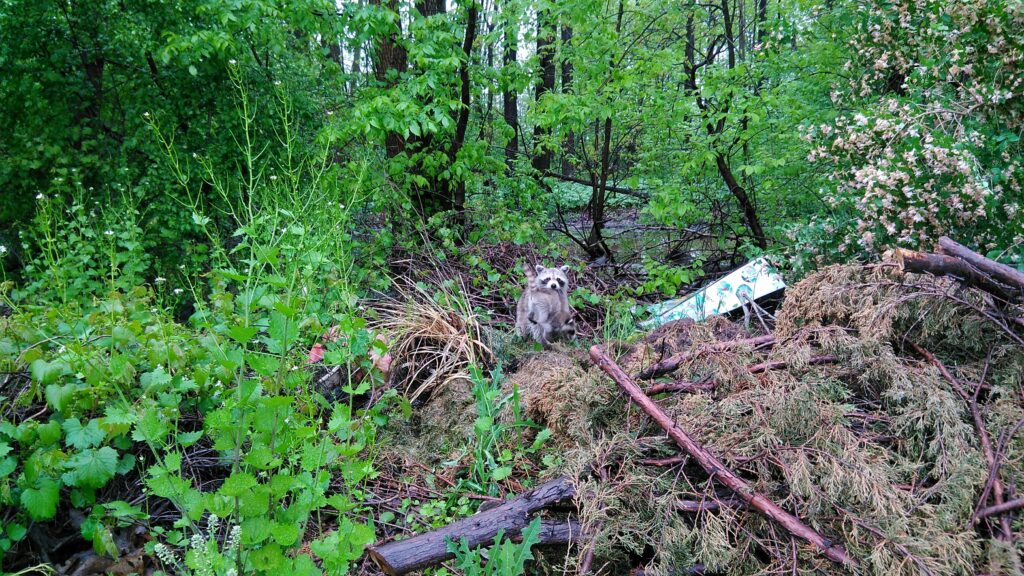There’s nothing like being greeted by bird songs in the morning. Trees in your backyard can provide a wonderful habitat for birds and other beautiful animals in your neighbourhood, but they can also have raccoon occupants. Find out how to determine whether a raccoon lives in one of your trees, why this could be a problem and who to call for humane raccoon removal in Pickering.
Signs of an Inhabited Tree
Most homeowners assume that spotting a raccoon climbing a tree is enough evidence. This makes a strong case for an inhabitant, but the raccoon may also be just passing through your property. You don’t have to reach out for professional assistance just because a raccoon is travelling through your yard.
You should, however, consider calling a wildlife professional if you believe the tree is the raccoon’s home. Here are some signs to look for around your property and in your backyard trees:
- The hollow or semi-hollow tree section
- Raccoon movement during the day
- Frequent raccoon sightings near a single tree
These signs aren’t guaranteed to prove you’ve found a raccoon’s home, so consider contacting an expert for more information. At Skedaddle Humane Wildlife Control, we offer free inspections to assess your property. If there’s a raccoon home nearby, it may be time for professional removal services for a comfortable and safe backyard experience.
Some homeowners resort to drastic measures and cut a tree down to evict a raccoon. If not handled carefully, this process could injure the animals. It may also be an ineffective solution if you have multiple trees on your property. Discuss this option with a trained expert, but wait until you receive professional guidance. You may be able to save your trees and find a less extreme way to humanely remove wildlife.

Dangers of a Raccoon in a Tree
Discuss the dangers of a raccoon in a tree in your backyard before choosing to have it removed. There are some cases when a nearby raccoon den doesn’t pose a threat to your home or your family.
In many cases, however, it’s best to give your home a little more wildlife-free space. One of the biggest dangers of a raccoon nearby is that it will notice your home. A tree is a suitable place for a raccoon to live, but it’s nothing compared to your basement or attic. Resourceful wildlife often discover this and look for ways to enter your home.
Whether inside your home or hanging around your yard, these wild animals pose health risks for you and your
family. A cornered raccoon can become aggressive and claw, scratch or bite. If an animal is behaving erratically or unusually active during the day, it may have rabies or distemper.
Raccoon nests, droppings and hair can all spread Salmonella, Leptospirosis and other diseases. Unless you use professional cleaning techniques, you won’t be able to properly disinfect your home or yard to protect yourself from these risks.
Living in close proximity to humans can also be a danger for the raccoon. While experienced climbers, these animals have been known to become stuck in trees or attic spaces. Improper removal techniques could injure a raccoon or cause it to abandon its babies. Leave the removal and cleaning process to an experienced wildlife team in your area.
Who To Call for Humane Raccoon Removal in Pickering
Skedaddle Humane Wildlife Control is your leading team for fast, efficient and humane raccoon removal. Request an inspection today to see how we can safely remove raccoons from trees, attics or other areas of your property. We thoroughly clean the affected areas and help you find ways to prevent other animal intruders on your property.



